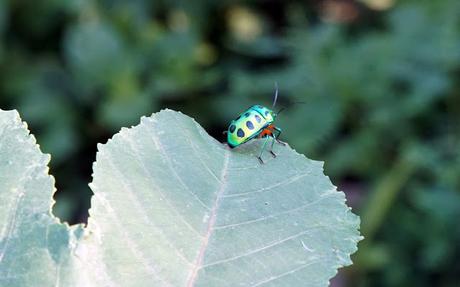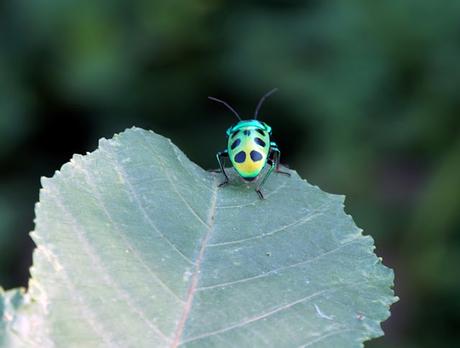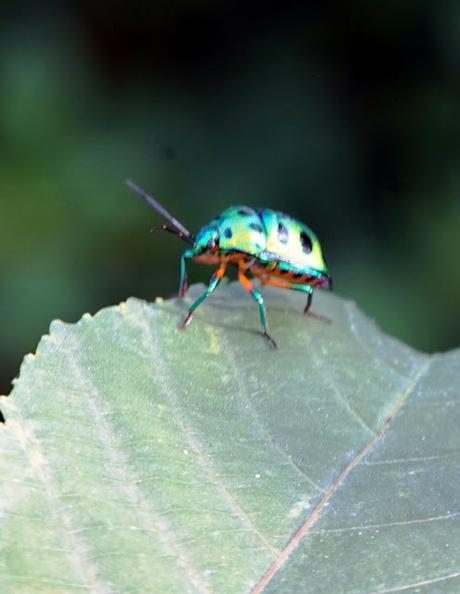முன்ன ஒரு காலத்துல மக்கள் தாங்கள் உடுத்திய துணிமணிகளை ! கல்லில் அடித்து அழுக்கு போக தோய்த்து வந்தனர். வாய்க்கால்கள், ஆறுகள், குளங்கள், கண்மாய், ஏரிகள், போன்ற நீர்நிலைகள் அருகிலும், வீட்டு புழக்கடையில் ஒரு பெரிய அகலமான கல் இருக்கும். துணிகளை நன்றாக நனைத்து, சோப்பு போட்டு கல்லில் அடித்து துவைப்பார்கள் !! அந்த காலங்களில் ரேடியோவில் கேட்ட ஒரு விளம்பரம் - "பொன் வண்டு பார் சோப்பு" !! பொன்வண்டு பூச்சி தொகுதியில் (Class Insecta), புப்ரெஸ்டிடெ (Buprestidae) என்ற உயிரியல் குடும்பத்தில், ஸ்டேர்னோசெரா (Sternocera) என்ற பேரினத்தை சேர்ந்த வண்டு வகைகளாகும். இவற்றின் உடலின் மேற்புற ஓட்டுப்பகுதி உலோகத்தைப் போல் மின்னும் தன்மை கொண்டது

Nature teaches us many lessons, in many perspectives including designing materials and inspiring new applications or approaches. One can read, understand the evolution of living things on how they are adaptive, responsive to their surroundings, as living organisms have evolved to solve a lot of these problems in materials complexity.
Nature-inspired materials are materials that have some component that has been inspired or derived from living organisms, in their form, function, or design. The idea behind bio-inspired or nature-inspired materials is that living organisms and nature have had billions of years to evolve and test different materials and different forms and functions. We can benefit from that as scientists by looking at how nature has solved its problems and that can provide some potential solutions to our engineering and design challenges. That’s the motivation behind looking at nature!

The Cotton Harlequin Bug is a member of the Jewel Bug family named for their bright metallic colouration. Tectocoris diophthalmus, commonly known as the hibiscus harlequin bug or cotton harlequin bug, is the sole member of the genus Tectocoris. It is a brightly coloured convex and rounded shield-shaped bug with a metallic sheen that grows to about 20 mm. Adult females are mostly orange and males are both blue and red or orange, while nymphs are typically metallic green and purple. The colours are quite variable, and experiments suggest that the variation in color may reduce bird predation, especially on the immature stages. This extreme level of variation is such that different taxonomists have, since 1781, described this species under different new names at least 16 times, some of these supernumerary names remaining in use until 2006, when it was finally confirmed that they were all color forms of a single organism. It is common in Eastern Australia, New Guinea and several Pacific Islands in habitats ranging from urban to agricultural and coastal areas.
Hibiscus harlequin bugs feed on many species of the family Malvaceae, as well as cultivated cotton. They will also feed on Illawarra flame tree flowers, grevillea and bottlebrush saplings. They pierce the stems of young shoots and suck the sap. Females lay clusters of eggs around stems of usually the hibiscus plant and then guards them until they hatch.

Not intended to be any Science related post .. ..simple thoughts, collating of some articles after photographing this tiny insect – green to look at – has some blue dots running across with some crimson coating in legs! – a marvel of nature – this beetle, no a bug !!
With regards – S. Sampathkumar
4.9.2023

